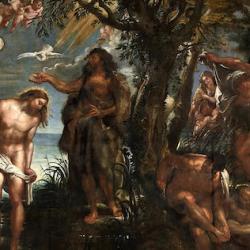In ancient Israel, the vast majority of those circumcised were circumcised as infants. If one were developing a theology of circumcision, it wouldn’t make sense to focus on the comparatively rare adolescent or adult circumcisions. What is normal in practice would naturally be the norm of theology.
In the two-millennia history of the church, the vast majority of those baptized were baptized as infants. Yet, baptismal theology is often developed, even among paedobaptists, as if infant baptism were the exception rather than the rule. What is normal in practice should be the norm of theology.
In some traditions, this appears in a disjunction between what the New Testament asserts about baptism and what is said about infants who are baptized. The New Testament says that those who have been baptized have died and been buried with Christ (Romans 6), that baptism saves (1 Peter 3), that baptism clothes the baptized with Christ (Galatians 3).
Yet, some paedobaptist churches, perhaps especially Reformed churches, refuse to apply the claims of these texts to the children baptized in a straightforward fashion. Even though infants are baptized, we cannot yet say that they have been united to Christ’s death, or clothed with Christ, or saved.
At other times, this ambivalence appears in systematizations of sacramental theology. On the one hand, one makes an argument for infant baptism; on the other hand, a baptismal theology is developed that assumes non-infant baptisms are the norm. If we take convert baptism as the norm, then the relation of faith and baptism will be described in one way. If we take infant baptism as our theological norm, the relation of faith and baptism will appear somewhat different.
I paint in broad strokes. That doesn’t mean my portrait doesn’t capture it paints.














